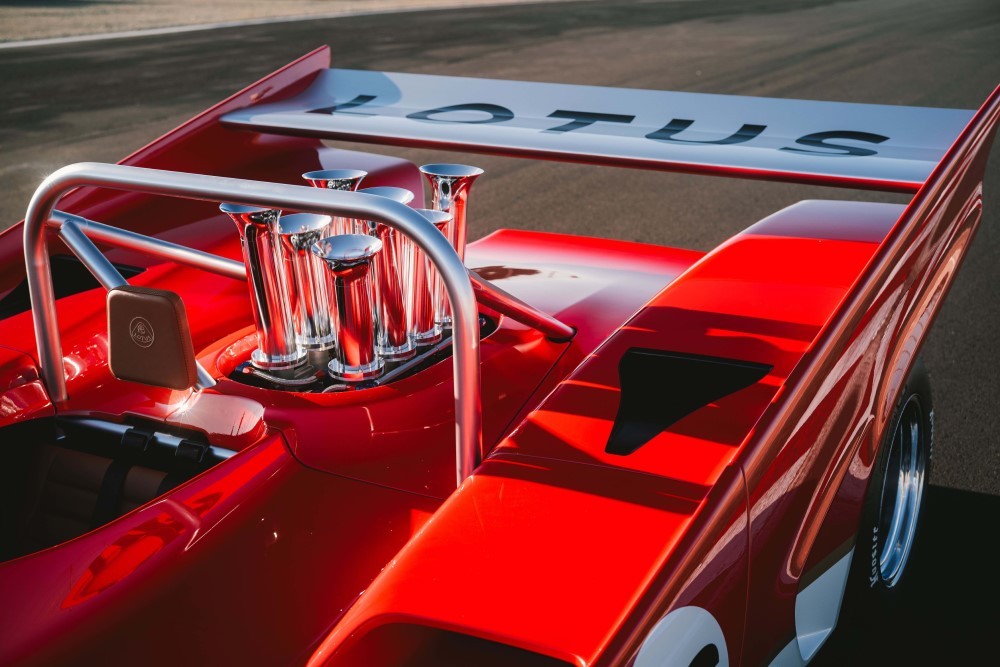
Dream Comes true as Lotus revives 1970 racer
LOTUS has taken a look at its past with plans to produce a long-forgotten Can-Am Series concept that was designed in 1970 but failed to make it to reality.
Now, in Lotus’s 75th year, it announces that the Type 66 will be made with only 10 to be offered to enthusiasts, each costing about $A1.8 million.
The Type 66 was unveiled recently at “The Quail, A Motorsport Gathering” as part of Monterey Car Week in California.
The green light for the racer means the ultra-exclusive, low-volume car will bring to life a lost Lotus drawing board program that will combine the company’s renowned motorsport heritage with state-of-the-art racing technology and components.
In 1970, Lotus founder Colin Chapman looked at the high-profile and commercially lucrative Can-Am Series. He tasked Team Lotus draughtsman Geoff Ferris to launch the Type 66 project to evaluate how
Lotus design principles could be applied to this category.

However, Chapman’s primary focus on Formula 1 meant the innovative project never went beyond technical drawings and scale models. Until now.
The company said that only 10 examples of this ‘rediscovered and reimagined’ Lotus V8 will be built. The build number commemorates the number of races the Type 66 would have competed in during the 1970 season.
The car made its public debut in a heritage-inspired livery – reflecting the red, white and gold colours Lotus raced in during the early 1970s – and which could have adorned the Type 66, alongside the all-conquering Lotus Type 72 F1 car.
Now, the Type 66 is one of the most exclusive projects Lotus has ever undertaken and each example will cost in excess of about $A1.8 million.
Lotus Advanced Performance executive director Simon Lane said: “The Type 66 perfectly blends the past and present. It takes drivers back in time, to the iconic design, sound and pure theatre of motorsport more than 50 years ago, with added 21st century performance and safety.
“This is a truly unique project and in our 75th anniversary year it’s the perfect gift from Lotus, to fans worldwide and to a handful of customers.”
He said that while the visual expression is similar to what the 1970s version promised – including the period-correct white, red and gold graphics – the technology and mechanical underpinnings of the Lotus Type 66 represent the very best in today’s advanced racing performance.
Crucial to the development of the Type 66 program has been Clive Chapman, managing director of Classic Team Lotus and son of Colin Chapman. It was documents held by Clive which allowed the Lotus Design team to bring the car to life.
Clive Chapman said: “The car would have shared many innovative features with our most successful F1 chassis, the Lotus Type 72, which was developed during the same era.
“These include side-mounted radiators which helped reduce front drag, increase front downforce and channel airflow through and over the car. The rear of the car incorporates a distinctive tail section, resembling the Le Mans endurance cars of the period.
“These features would have boosted its downforce considerably, compared to rivals, aiding high-speed stability and, ultimately, its lap times. It would have been spectacular, as is the actual Type 66 we see today.”
He said it was highly likely that Lotus F1 legend Emerson Fittipaldi would have driven the Type 66 if it had been built. The Brazilian was guest of honour on the Lotus stand at The Quail and helped to unveil the car.
More than 1000 hours of Computational Fluid Dynamics (CFD) work has gone into the program, resulting in downforce in excess of 800kg at 150mph.
Lotus said this was far more than the original underbody design would have been able to manage, enhancing both driver safety and vehicle performance for quicker lap times.
At the heart of the Type 66 is a period-representative V8 push-rod engine. It’s mid-mounted for optimised handling, tuned by Lotus to produce more than 830bhp (620kW) at 8800rpm.
Bespoke modern-day components include an aluminium forged crank, rod and pistons, which generate torque of more than 746Nm at 7400rpm.
The iconic Can-Am-inspired air intake ‘trumpets’ take centre stage at the top of the engine. These not only smooth out the air intake to create laminar flow, but also greatly improve the volumetric efficiency, allowing for greater combustion and more power.
The chassis is also period-representative, with extruded aluminium sections, bonded joints and aluminium honeycomb panels adding to its authenticity.
To ensure drivers can unlock maximum performance when on track, the Type 66 features modern comforts such as an EPASS motorsport power steering column, a sequential racing gearbox with reverse, a race ABS braking system, an anti-stall multi-plate clutch and a fixed rollover bar.
Following the car’s world debut at The Quail, the Type 66 was displayed on the Concept Lawn at the Pebble Beach Concours d’Elegance.
Once you've found the right car, the next step is sorting out car finance that actually works for your budget. Credit One is Australia's best-reviewed finance broker, with 3,000+ five-star Google reviews from customers who've been through the process. Check out Credit One reviews to see what people say, or head straight to the loan repayment calculator to see what the numbers look like.
